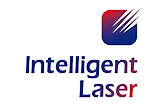In the current welding production process, different products usually require specific welding equipment and fixtures, the need to design different types of production lines and production processes, even for similar products, due to different models, usually need to replace the fixture. At the same time, because the workpiece in the grouping process there are grouping errors, machining process there are processing errors, so it will lead to the actual welded workpiece and the design of the difference between the workpiece consistency is poor, for robot welding simple teaching usually has a large error. The thermal deformation during the welding process can also cause errors, resulting in welding defects. The above problems are common in general industrial production, which requires welding automation production lines with the ability to accurately locate the workpiece and correct deviations, as well as the ability to detect the weld seam in real time during the welding process, adjust the welding path, correct welding deviations, and ensure the quality of the weld, which can also significantly reduce the workload of the operator, improve welding efficiency, reduce manufacturing costs, and achieve intelligent and flexible manufacturing.
The development history of weld tracking technology
A key technology for intelligent welding is to achieve automatic positioning and real-time tracking of the workpiece and weld seam. In the early days, due to the backwardness of detection and computer-related basic technology, weld seam positioning and tracking technology was difficult to achieve, and factories usually could only design and produce precision fixtures, while increasing the requirements for the assembly process, but for small batch production, this approach was usually difficult to achieve.
Since the 1970s, there has been some development in weld seam positioning and inspection technology. There are two main advances, on the one hand, the development of mechanical contact profiling tracking. Mechanical profiling has wear and tear problems over time, as well as low accuracy, which is a major limitation in application and is usually used in scenarios requiring low welding accuracy. On the other hand, based on the principle of arc sensing, researchers have achieved real-time arc tracking and wire touch position finding, but arc tracking usually requires the welded workpiece to be a fillet weld and requires the use of swing welding, which also limits the use of arc tracking.
After 2000, with the development of information technology and embedded processing technology, sensor technology and image processing technology advances, foreign researchers have made great progress in the field of non-contact real-time tracking, and the formation of productization capabilities. 2010 after China's enterprises, schools and research institutions for non-contact weld tracking technology gradually carried out in-depth research and development, while with the robot With the maturity and popularity of robot applications, weld seam tracking technology has made a breakthrough and is gradually becoming mature.
Laser structured light detection method based on the triangulation principle The method has been widely used because of its high contrast, high accuracy, real-time and non-contact characteristics. In practical use, there are various types of laser structured light, such as single-line structured light, multi-line structured light, circular and elliptical structured light, dot matrix, etc. The most widely used is single line structured light, based on the single line structured light weld tracker has a simple structure, good real-time, cost-effective features, has been maturely used in the field of weld tracking, weld position finding, etc., is also the future development direction of weld detection and tracking.
Conclusion
Laser-based structured light weld seam positioning and real-time tracking technology has a wider range of application scenarios, and higher real-time and accuracy compared with other weld seam tracking technologies. The future of laser-based weld seam tracking, especially based on 3D imaging technology is bound to have a broader development in the field of intelligent welding.
